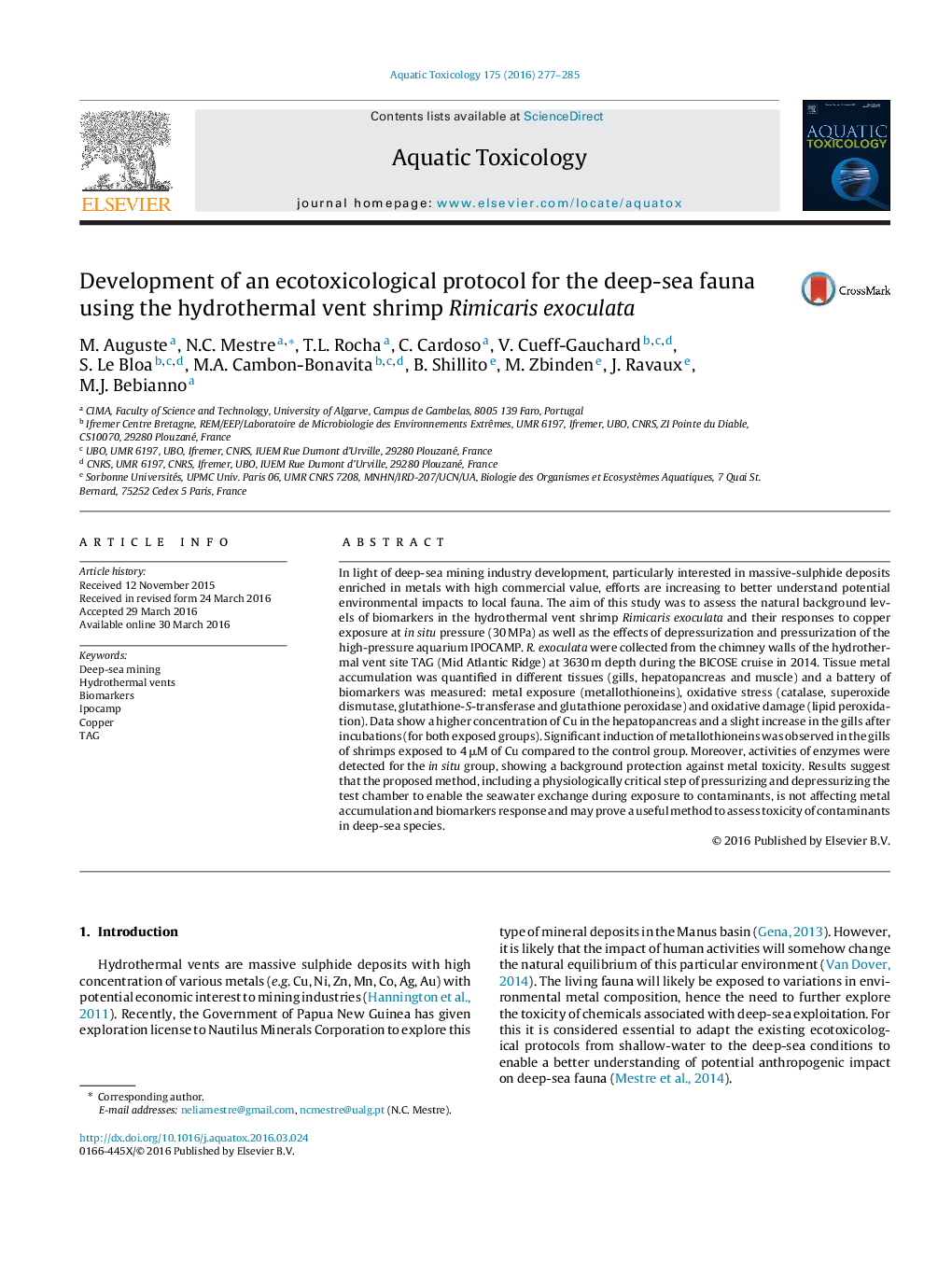| کد مقاله | کد نشریه | سال انتشار | مقاله انگلیسی | نسخه تمام متن |
|---|---|---|---|---|
| 4528857 | 1625930 | 2016 | 9 صفحه PDF | دانلود رایگان |

• Rimicaris exoculata have developed antioxidant defences to cope with a metal-rich habitat.
• The depressurization of the test chamber every 12 h did not affect the biomarkers response.
• The proposed method seems useful to assess toxicity to contaminants in deep-sea species.
In light of deep-sea mining industry development, particularly interested in massive-sulphide deposits enriched in metals with high commercial value, efforts are increasing to better understand potential environmental impacts to local fauna. The aim of this study was to assess the natural background levels of biomarkers in the hydrothermal vent shrimp Rimicaris exoculata and their responses to copper exposure at in situ pressure (30 MPa) as well as the effects of depressurization and pressurization of the high-pressure aquarium IPOCAMP. R. exoculata were collected from the chimney walls of the hydrothermal vent site TAG (Mid Atlantic Ridge) at 3630 m depth during the BICOSE cruise in 2014. Tissue metal accumulation was quantified in different tissues (gills, hepatopancreas and muscle) and a battery of biomarkers was measured: metal exposure (metallothioneins), oxidative stress (catalase, superoxide dismutase, glutathione-S-transferase and glutathione peroxidase) and oxidative damage (lipid peroxidation). Data show a higher concentration of Cu in the hepatopancreas and a slight increase in the gills after incubations (for both exposed groups). Significant induction of metallothioneins was observed in the gills of shrimps exposed to 4 μM of Cu compared to the control group. Moreover, activities of enzymes were detected for the in situ group, showing a background protection against metal toxicity. Results suggest that the proposed method, including a physiologically critical step of pressurizing and depressurizing the test chamber to enable the seawater exchange during exposure to contaminants, is not affecting metal accumulation and biomarkers response and may prove a useful method to assess toxicity of contaminants in deep-sea species.
Figure optionsDownload as PowerPoint slide
Journal: Aquatic Toxicology - Volume 175, June 2016, Pages 277–285